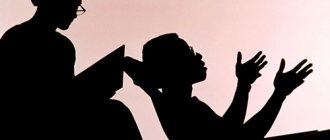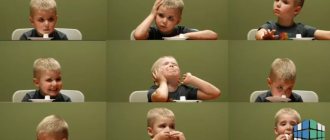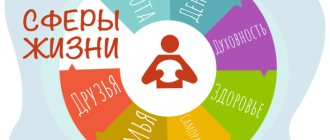Parapsychology is a pseudo-scientific field that deals with the study and detection of various supernatural, magical manifestations, both in humans and in the surrounding wildlife relating to the psychic spectrum. Various phenomena after death are also studied here, scientific methods are used, however, despite statements about multiple studies, only a tiny portion of publications exist on this issue. Parapsychology is a pseudoscience, which is one of the most understandable explanations for the lack of evidence base, and not classified experimental processes funded by various universities under a secret classification.
Briefly, parapsychology is a branch that studies various abnormal processes in the psyche of humans and animals, however, it has a greater focus on mystification, the other world, and the study of life after death than the sphere of abnormal development of pathopsychology. Both branches study deviations from the norm that are abnormal, paranormal, only pathopsychology has an evidence base and works at the intersection of medicine, has validated methods and has official recognition, while there is practically no evidence for parapsychology and it is not recognized as anything scientific.
What it is
When parapsychology first appeared, magic was equated with its main object of study; a little later these phenomena were separated. As a result, the ability to telepathy, extrasensory perception, various types of clairvoyance, poltergeists, bioenergetic healing, various out-of-body and near-death experiences, reincarnation and other points are studied, based on the acceptance of the statement that the human soul is not attached to a physical carrier and can exercise its influence outside the body , as well as to feel moments that are not accessible to standard senses of perception.
Parapsychologists believe that due to the insufficient development of the scientific and experimental base, humanity simply does not have the ability to prove the existence of these phenomena, this is comparable to how a millennium ago it was impossible to decompose a cell into atoms, and it into electrons. Research institutes, in turn, do not want to accept evidence of existing assumptions, because all the data obtained were provided with a huge number of methodological violations. Between these two opposite moments stand representatives of various spiritual directions, who accept such manifestations of higher suprapsychic abilities, spiritual and mystical experiences, but prefer not to touch this sphere, leaving the divine untouched, since human consciousness is still not able to comprehend all these multidimensional secrets.
The study of the perception of information not related to the work of recognized biology and anatomy of organs can be considered an explanation of what parapsychology is. In addition, this includes moments of influence on material matter through psychic energy without the application of muscular effort.
If pathopsychology borders on psychiatry, developmental psychology borders on pedagogy, then parapsychology is closely related to various esoteric teachings and mysticism. This direction (there is no data to interpret it as a science) describes and tries to explain any interaction with a temporal, human and spatial process that does not fit into standard paradigms.
Human parapsychology is on the same level as the supernatural psychic abilities of animals, usually manifested in the ability to sense the influence of invisible or intangible forces, as well as processes, the explanation of which is extremely weak from a scientific point of view.
Parapsychology includes clairvoyance and the ability to sense other worlds, the ability to change the properties of objects at a distance or, without touching and communicating with the dead, change the future and material components of an object in the present. Being a continuation of the currents of hoaxes and esotericism, paranormal psychology faces multiple criticism, and if representatives of various religious and esoteric concepts can tolerate criticism from representatives of other movements, then parapsychology studies them all at the same time, without rejecting any one.
In such a hodgepodge one can observe the abilities of Indian yogis, open super-powerful channels in a Christian temple, and at the same time work with necromancers in the shamans’ cemetery. The spread of the anti-scientific approach with such great popularity and even demands to be included in recognized fields is due to the frequent inability of the human mind to explain the premonitions, deceptions of perception and voice that are constantly present in everyone’s life, when a healthy psyche is implied, and emotional states do not require treatment in a neuropsychiatric hospital.
Arguments against
Many parapsychologists forget to add “maybe” to their categorical statements. What we do not understand today will not become more understandable if we put a “far-fetched” scientific basis behind it.
And of course, a great many charlatans and mentally ill people do not contribute to trust in the methods and phenomena promoted by parapsychologists. They only make things worse and delay the moment when this or that unknown phenomenon will be comprehensively studied and either accepted into the fold of science or rejected with all grounds.
We often go to healers and psychics when official science cannot help us - be it an incurable somatic disease , mental disorder, chemical dependence, or persistent longing for a deceased loved one. People who strive to help us rarely make mistakes in good faith; more often they try to profit from the pain and suffering of others.
Instead of bringing relief, they often aggravate the painful condition and cause irreparable harm. Perhaps this is why official psychology not only does not support parapsychology, but also actively fights it. A conscientious parapsychologist is, first of all, a doubting person who strives to know the truth, and not to prove that he is right at any cost.
The emergence and history of parapsychology
The point of origin of parapsychology can be considered the formation of the term itself, introduced by Max Dessoir at the end of the nineteenth century. At that time, parapsychology was understood as any deviation from the norm or inexplicable processes, so it explored those aspects that are now transferred to pathopsychology and recognized as a scientific discipline. Over time, the sciences were transformed and what is now understood as parapsychology became the study of the phenomena of the collective unconscious, issues of telepathy and the like.
To be completely honest, the birth of parapsychology began at the same time as humanity appeared, since even without modern terminology and methodology there were already prerequisites for the study of strange mental processes. Egypt, India, China and other developed civilizations devoted a lot of time and work to explaining the spiritual and energetic, and not just medical and biological, causes of death. Questions of the influence of the afterlife, souls of the unborn, mantras, prayers and spells were also raised; people sought connections with higher powers through rituals and noticed patterns of execution.
These themes run through all the myths and epics; there are whole schemes of interaction with the other world and explanations for when a person receives additional healing or visionary abilities. The appearance of prophets, mediums and predictors in all parts of the planet gave impetus to interest in such phenomena, and everyone’s space is formed without effort to search for such a person. In almost every village there lived, if not a witch, then a healer, or there was simply a person whose advice they listened to, without even telling the situation, or who could cure any disease. The lack of scientific knowledge provided scope for imagination, and all concepts were based on theorizing and descriptive nature. The great influence of religious movements led to the fact that any superpowers were immediately recognized as a miracle without attempts to explain and understand, which ultimately greatly slowed down the evidentiary and research side of the process.
Since the connection with magic is very close, the greatest flowering of parapsychology occurred in the Middle Ages, when it was common for all humanity to mystify any events, and belief in magic and similar moments reached its apogee. At that time, not only unsophisticated ordinary people believed in various superstitions, but also scientists and thinkers increasingly turned towards the influence of the invisible on reality.
Such an outbreak of activity in the esoteric aspect was the main impetus for parapsychology to become a separate branch and claim the title of science. Already here, the scientist Swedenborg writes many works on hypnosis and psychology, pays special attention to clairvoyance, and proves his arguments in practice to the greatest skeptics of that time. In other areas of vision, the ability to communicate with spirits and feel the influence of other worlds was induced by quackery, through the use of various hallucinogenic herbs, mixtures and other things in rituals. As a result of this, consciousness became altered and everything that was then attributed to any paranormal phenomena or incidents was only a chemical reaction in his brain.
There were also works on animal magnetism that did not withstand the criticism of the commissions, but did not lose popularity among ordinary people. This is a separate phenomenon, why people continue to believe in research findings that have been refuted at the official level. Critical thinking begins to give way to mystical thinking, or there is simply confidence that the information received is simply impossible to prove now. Just as many centuries ago people laughed at the theory of a round earth, perhaps now paranormal phenomena are also unnecessarily criticized and only those who believe their sensory experience can promote this version.
Books about parapsychology began to be published, at that time it resembled more a manual on magic than something close to science. The works of Kardec (he had certain abilities) are especially popular, thanks to whose efforts a special society for the study of psychic phenomena was created in London at the end of the nineteenth century. The priority was not to promote the study of temperamental or cognitive functions, but exclusively of some indescribable, incomprehensible, deviant abilities.
Research is beginning to intensify (England and the USA were considered the main bases, but other countries also maintained interest in this topic), in which various figures from scientists and philosophers to politicians take part. Initial research was devoted to telepathy and hypnosis, clairvoyance and the emergence of matter. Some phenomena later became part of official science, for example, hypnosis moved into the practical part of psychology, is studied and taught with the issuance of licenses at the level of medical certificates.
After single experiments confirming the theory became irrelevant, quantitative experiments began to be conducted at Duke University using the same methodology. For the first time, standard testing algorithms and generally accepted experimental models were developed, which intensified public interest in this topic, because the more similar things were done and the more they aspired to the appearance of official science, the more people expected practical proof of what had always been called superstitions.
On this wave, B. Rein publishes a book in which he uses the forgotten term of parapsychology, establishes laboratories dedicated to the study of phenomena, and also begins to publish a magazine about the latest research and various paranormal phenomena. Knowledge is being popularized.
In the twentieth century, an association of parapsychology was created, the goal of which was to collect all the knowledge of the professional community, as well as enter into cooperation with other official centers, provide information and promote the development of the field. Such a society was criticized by official science, they tried to bury it several times and stop its work with all sorts of other sanctions, however, its number is about three hundred people around the world.
A little history
The formation of parapsychology began a long time ago, even when humanity began to make attempts to rethink its occult-mystical heritage and the inexplicable or supernatural abilities of living organisms (humans, animals, plants), to provide a scientific basis for them, to explain rationally.
Modern parapsychology traces its history back to the creation of the Society for Psychical Research in England (1882) and in the USA (1885). We owe the very term “parapsychology” to Marc Dessoir. He is not the founder of this parascience, but only named and systematized what came before him.
In Russia, the development of parapsychology as a parascience began in 1875, when the Mediumship Commission appeared at St. Petersburg University. Its head was D.I. Mendeleev, which is not surprising, because the periodic system ; from a scientific point of view, this cannot be explained without using the words “unverified,” “doubtful,” and “possible.” This does not prevent the periodic table, known throughout the world, from being the basis for such a science as chemistry, and no one has any doubts about it. So we can rightfully call Dmitry Ivanovich Mendeleev the first Russian parapsychologist.
Parapsychology today
At the moment, all research and parapsychology laboratories are rapidly declining. Faced with strong resistance from official science, lack of evidence base and convincing conclusions, laboratories lose investors, and instead of support they receive only criticism and closure of projects. Laboratories that continue to exist are financed from the private capital of those people who actively believe in parapsychology or desperately hope to benefit from the magical implementation or development of their own unique capabilities.
Those phenomena that have achieved success in their methodological description have been interpreted from the point of view of physics or biology and have now gained recognition. This includes hypnosis as a way of influencing consciousness, the aura as a special human biofield. Work on the study of telekinesis was curtailed and the laboratory was closed due to the accumulation of empirical material (according to the official appeal).
The geography of research returned to the universities of England and the USA, but the emphasis of the study changed a little. If earlier much attention (in comparison with the topics raised now) was paid to clairvoyance and telekinesis, now priority goes towards the study of near-death experiences, and parapsychology itself has been supplemented by transcendental psychology, which also stands on the verge of pseudoscience, but has a greater evidence base and is less related to hoaxes.
There are modern schools of parapsychology, based not so much on study as on practical application. One of these studies the influence of the universe on the soul and their relationships, much of the knowledge is used from medicine, and the main direction is considered to be restoring the balance of interaction energies in the universe. Many positive reviews relate specifically to the side of medicine and the use of health practices, which is quite understandable due to the use of therapeutic techniques.
Other scales took as a basis getting rid of negative thinking, as ways of influencing thoughts throughout a person’s life. This approach gives optimism and energy and, from the point of view of dry science, works with a person’s worldview, which ultimately improves his overall picture of life, and does not magically transform the universe to suit his needs. There are other centers offering destiny correction, but people go to yoga centers and theological seminaries, which provide more harmonious approaches to personal development.
Arguments for
Much of what is beyond doubt today barely made its way into the consciousness of not only the average person, but also into the minds of pundits. a little into history , you can find a lot of examples of this. The names of Nicolaus Copernicus and Nikolai Lobachevsky will forever go down in history as examples of people who, with the power of their thoughts, overtook their time. Columbus and Schliemann went down in history as adventurers who accidentally made discoveries that changed our understanding of the world around us.
It is easy to remember that until recently genetics was a pseudoscience, and ball lightning and continental drift were considered nonsense. The rainbow now has a completely scientific explanation, but it became fully possible only with the development of optics.
Just because we can’t explain something doesn’t mean it doesn’t exist. And the human psyche is fraught with many secrets. This is also recognized by quite traditional psychologists , psychiatrists and psychotherapists. With the development of science, much of what today relates to parapsychology will find its scientific explanation or will be completely rejected.










